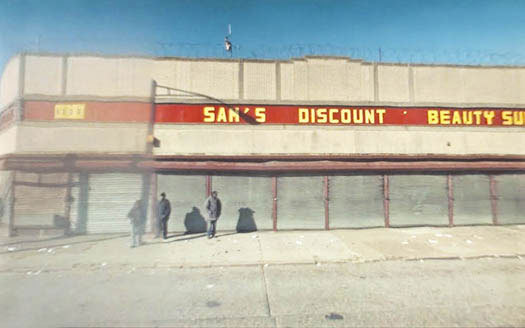Perspective: Doug Rickard and street photography in the Age of Google

Street photography used to be about urban/city life - about life on the street - the interaction of...
Street photography used to be about urban/city life – about life on the street – the interaction of people and places. As a counterpoint, there was both architectural (building focused) and urban (more generic than buildings but less people-focused than street) photography.
The photography of streets =/= street photography
But in the last couple of years the two terms have increasingly been conflated – street photography and the urbanist photography of streets have almost merged together, as they have in Rickard’s photos. This hasn’t gone unchallenged:
https://twitter.com/#!/NickTurpin/status/154226917946560512
Turpin’s right to resist this amalgamation: street photography is primarily about people on the street, while urbanist street photography is about streets that happen to have people in them. Turpin’s had a fair bit of flack for this on twitter, often along the lines of ‘you can’t have impermeable boundaries between photography disciplines’.
Authenticity and photography, or the perils of selective re-imagining the past
But you can’t (or should I say you shouldn’t) also retrospectively re-cast what photography is about either: to do so lacks discipline (in that it’s an intellectual short-cut that’s frequently obscured from the viewer) and is a convenient cop-out. This is photography as a form of comprehensive record-keeping, that has then subsequently been selectively edited to create a documentary style commentary on modern American urban life. It’s a great approach, and the results are really fascinating. In this, photography is a tool. In street photography, photography is the tool.
But it’s not street photography, and to label it as such shows a surprising ignorance of photographic history.

